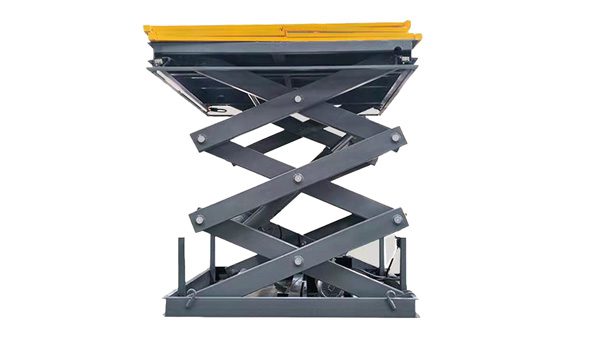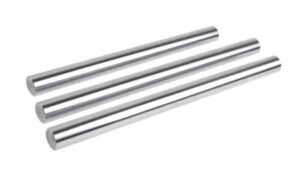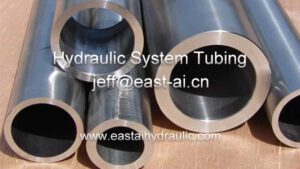Maximise the efficiency of automotive repairs | Car Lift and Hydraulic Cylinder
When it comes to automotive maintenance and repair, car lifts play an indispensable role in providing access to the undercarriage of vehicles. However, the efficiency and reliability of these lifts are largely owed to a critical component hidden within their mechanism – the hydraulic cylinder. This article explores the synergy between car lifts and hydraulic cylinders, shedding light on how these technologies work together to facilitate vehicle lifting.
Understanding Car Lifts
Car lifts are essential tools in automotive workshops, dealerships, and even home garages, enabling professionals and enthusiasts alike to elevate vehicles for inspection, maintenance, and repair. They come in various designs, each tailored to specific needs and spaces.
- Types of Car Lifts
- Two-post lifts are widely used for their balance of space-saving and accessibility.
- Four-post lifts offer more stability and are ideal for heavier vehicles.
- Scissor lifts provide a compact lifting solution with a smaller footprint.
- Portable lifts cater to those requiring mobility and flexibility in their lifting equipment.
These lifts are integral to performing efficient automotive work, facilitating everything from simple oil changes to comprehensive repairs.
Exploring Hydraulic Cylinders
At the heart of many car lifts is the hydraulic cylinder, a simple yet powerful device that converts fluid pressure into mechanical force. This mechanism is fundamental to lifting heavy loads smoothly and efficiently.
- How Hydraulic Cylinders Work: By pressurizing fluid in a confined space, hydraulic cylinders extend or retract, creating linear motion that is harnessed to lift or lower loads.
- Components of Hydraulic Cylinders include the cylinder barrel, piston, piston rod, and sealing elements, each playing a crucial role in the cylinder’s operation.
Hydraulic cylinders are categorized into single-acting (pressure applied in one direction) and double-acting (pressure applied alternately for both extension and retraction), with the latter being more common in car lift applications for their versatility and control.
The Connection Between Car Lifts and Hydraulic Cylinders
Hydraulic cylinders are pivotal to the operation of car lifts, providing the muscle needed to raise vehicles off the ground. The fluid dynamics involved allow these systems to lift heavy weights with precision and stability, offering several advantages:
- Safety Features: Hydraulic lifts include safety locks and overload protection, ensuring a secure environment for users.
- Efficiency and Speed: The hydraulic mechanism allows for quick lifting and lowering, saving valuable time during automotive tasks.
- Durability and Reliability: Hydraulic systems are known for their longevity and minimal maintenance requirements, making them a cost-effecti solution for both commercial and personal use.
Benefits of Using Hydraulic Car Lifts
Choosing a hydraulic car lift brings with it a suite of benefits that enhance the functionality and safety of automotive work.
- Safety features in hydraulic lifts are paramount, with built-in mechanisms to prevent accidents, such as automatic locks and pressure relief valves that engage in case of hydraulic failure.
- Efficiency and speed are significantly improved thanks to the hydraulic system’s ability to quickly elevate vehicles, allowing for faster turnaround times in repair and maintenance tasks.
- Durability and reliability of hydraulic lifts make them a wise investment. Their robust design and few moving parts mean less wear and tear, leading to lower maintenance costs over time.
Maintenance Tips for Hydraulic Car Lifts
To ensure the longevity and safe operation of hydraulic car lifts, regular maintenance is essential.
- Regular inspection routines should include checking for hydraulic fluid leaks, ensuring all moving parts are lubricated, and verifying the integrity of safety locks.
- Lubrication and cleaning of the lift’s components prevent rust and corrosion, while keeping the hydraulic fluid at the recommended level ensures smooth operation.
- Troubleshooting common issues like uneven lifting or slow operation can often be resolved by referring to the manufacturer’s guidelines, ensuring that small problems don’t escalate into larger ones.
Innovations in Car Lifts and Hydraulic Systems
The automotive lift industry continues to evolve, with innovations focusing on improving efficiency, safety, and environmental sustainability.
- Technological advancements have led to smarter lifts equipped with sensors and automated systems, enhancing precision and safety.
- Eco-friendly and energy-efficient designs are increasingly common, with manufacturers exploring ways to reduce power consumption and hydraulic fluid waste, aligning with global sustainability efforts.
Choosing the Right Car Lift for Your Needs
Selecting a car lift requires careful consideration of several factors to ensure it meets your specific requirements.
- Space availability is crucial; different lifts have varying footprints and height requirements.
- Weight capacity must align with the types of vehicles you intend to lift, ensuring the lift can handle the load safely.
- Type of vehicles being serviced will also influence the choice of lift, as different designs cater to different vehicle sizes and shapes.
Recommendations for different settings vary, but the key is to balance your needs with the lift’s features, ensuring it can perform the required tasks efficiently and safely.
The connection between car lifts and hydraulic cylinders is a testament to the importance of hydraulic technology in the automotive industry. This synergy not only enhances the functionality and safety of car lifts but also underscores the need for proper maintenance and understanding of these systems. Whether for commercial use or personal projects, choosing the right hydraulic car lift can significantly impact the efficiency and safety of vehicle maintenance tasks.




